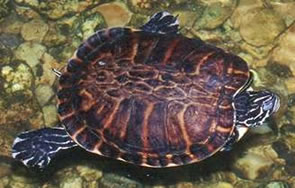
Florida Cooter
Pseudemys floridana
Description: The Florida cooter is a large turtle with very similar physical characteristics to the river cooter. These include a dark carapace (top of shell), light colored plastron (bottom of shell), striped head and neck, and a concentrically patterned shell. Distinguishing this species from the closely related river cooter (Pseudemys concinna) and redbelly turtle (Pseudemys rubriventris), as well as the yellowbelly slider (Trachemys scripta) can be difficult. On younger Florida cooters concentric markings on its shell are usually visible. Markings are usually vertical and lack the “C” on the second side scute characteristic of the river cooter. However, on older individuals, this is often not visible. This turtle can be distinguished from the slider by its significantly more flattened and flared shell and by its flat chin (rounded in sliders). Redbelly turtles have reddish or orange plastrons and reddish vertical bars on the carapace. Adults are between 9 and 13 inches (23-33 cm) in carapace length.
Feeding/Diet: The Florida cooter is mostly herbivorous and feeds primarily on aquatic vegetation.
Activity/Behavior: Basking is the most prominent behavior of the Florida cooter.
Habitat/Range: Florida cooters are normally found in still water, such as wetlands, marshes, and ponds. These habitat preferences help distinguish them from river cooters which prefer rivers and large streams.
Reproduction: Clutches contain between 12 and 20 eggs and are laid during early summer.
Miscellaneous: The Florida cooter has been known to hybridize with the river cooter, and, to a lesser extent, the redbelly turtle.
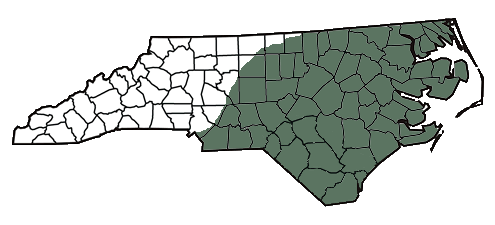
The shaded region represents the range of the Florida cooter in North Carolina.
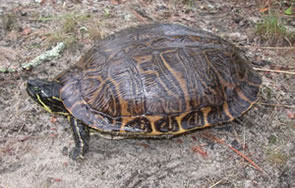
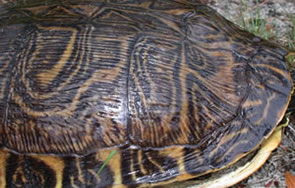
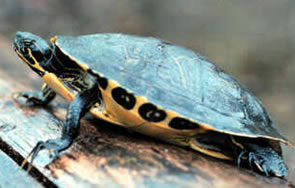
Photo by J. Willson
Photo by J. Willson
